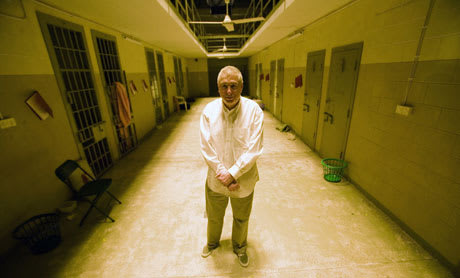On its surface, documentarian Errol Morriss new film Standard Operating Procedure concerns the abuses by the American military at Abu Ghraib prison in Iraq, a subject that was notably covered by Rory Kennedys Ghosts of Abu Ghraib.
The scandal resulted in the conviction and imprisonment of several low-ranking military officials, including Lynndie England, who took and was in numerous photos presented as evidence that criminal activities were taking place there.
Yet Morris isnt as interested in covering the circumstances of Abu Ghraib. What fascinates him in SOP is that several thousand photographs were taken on three different cameras over the course of several months. What those photos show and crucially for Morris, what they dont is the focus here. Utilising his trademark talking head interview approach (honed in films like The Thin Blue Line and Fast, Cheap and Out of Control), combined with dramatic recreations of events, Morris fleshes out the context outside the frame of these notorious snaps.
What fascinates him is the impulse to document what is clearly "bad behaviour: how those photographs permeated the military culture right to the top at Abu Ghraib, and the ways in which those photographs brought a hammer of "justice down on participants low on the food change of authority, and not on anyone with a ranking higher than staff sergeant the photos themselves are both exposé and cover-up.
While the torture and abuse suffered by imprisoned Iraqis at Abu Ghraib is dramatised, no Iraqi is heard from (a marked departure from Kennedys doc). Instead, Morris focuses on the system of "justice offered by the American military system. Scapegoats in the affair range from Brigadier General Janis Karpinkski (head of the Iraqi prison system, stripped of influence, then demoted by Bush) to Private England and Specialist Megan Ambuhl, who were both romantically involved with Corporal Charles Graner, who remains in prison for his involvement.
The most terrifying element is the sense that the abuses captured on the photographs were just "warm-ups for more significant and terrifying torture conducted less openly by numerous American and international bodies. By looking at what the photographs show and asking what they dont, Morris challenges our perceptions of truth. The answers will shake anyones moral compass.
(Mongrel Media)The scandal resulted in the conviction and imprisonment of several low-ranking military officials, including Lynndie England, who took and was in numerous photos presented as evidence that criminal activities were taking place there.
Yet Morris isnt as interested in covering the circumstances of Abu Ghraib. What fascinates him in SOP is that several thousand photographs were taken on three different cameras over the course of several months. What those photos show and crucially for Morris, what they dont is the focus here. Utilising his trademark talking head interview approach (honed in films like The Thin Blue Line and Fast, Cheap and Out of Control), combined with dramatic recreations of events, Morris fleshes out the context outside the frame of these notorious snaps.
What fascinates him is the impulse to document what is clearly "bad behaviour: how those photographs permeated the military culture right to the top at Abu Ghraib, and the ways in which those photographs brought a hammer of "justice down on participants low on the food change of authority, and not on anyone with a ranking higher than staff sergeant the photos themselves are both exposé and cover-up.
While the torture and abuse suffered by imprisoned Iraqis at Abu Ghraib is dramatised, no Iraqi is heard from (a marked departure from Kennedys doc). Instead, Morris focuses on the system of "justice offered by the American military system. Scapegoats in the affair range from Brigadier General Janis Karpinkski (head of the Iraqi prison system, stripped of influence, then demoted by Bush) to Private England and Specialist Megan Ambuhl, who were both romantically involved with Corporal Charles Graner, who remains in prison for his involvement.
The most terrifying element is the sense that the abuses captured on the photographs were just "warm-ups for more significant and terrifying torture conducted less openly by numerous American and international bodies. By looking at what the photographs show and asking what they dont, Morris challenges our perceptions of truth. The answers will shake anyones moral compass.
